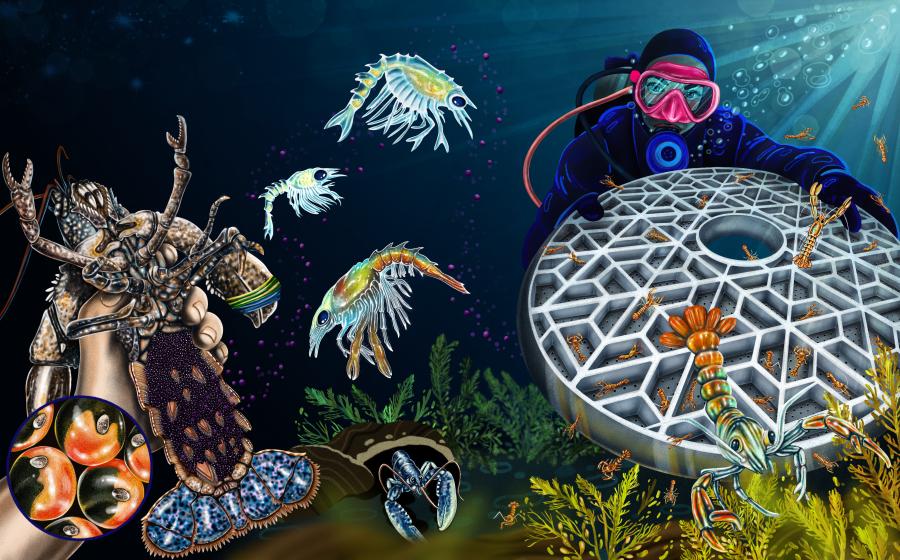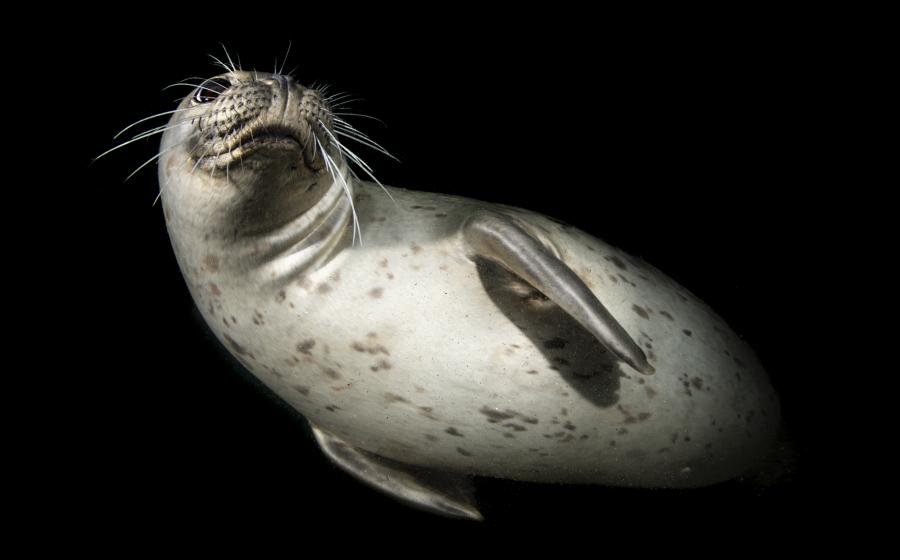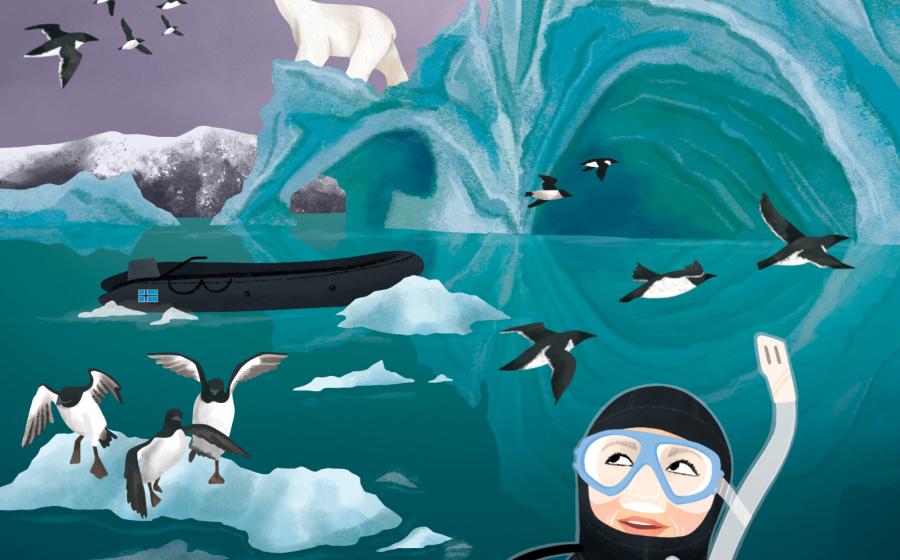How Research Makes Wreck Diving More Rewarding

Julian CohenLearning the history makes wreck diving deeply rewarding.
Every shipwreck has a story to tell. Whether sunk by disaster or design, through an event unexpectedly tragic or meticulously engineered, no matter how a wreck lost its battle with buoyancy, there’s typically a tale to be told.
Wrecks are why many of us began diving, enticed by the lure of lost treasure, the mystery of a ship taken by the deep, or just a curiosity to see what’s inside. Motivations aside, divers are drawn to sunken ships like kids to candy. It’s why wreck historian Ellsworth Boyd first donned a scuba cylinder in the 1960s.
“There’s a fascination about the story behind a shipwreck,” he says. “Once divers start to delve in, they want to know more. The fascinating part for me is that once you get into the main story of the sinking of the ship, there are little stories surrounding the major story.”
Boyd, a professor emeritus at Maryland’s Towson University, has researched hundreds of vessels as the author of the Wreck Facts column in Skin Diver and Sport Diver magazines, as well as other dive publications, for more than a decade. Over the years, he’s developed some all-time favorite wreck dives, usually those with the best backstories.
“Antilla off Aruba really is my favorite wreck,” says Boyd, who was inducted into the International Legends of Diving in 2013. “It’s a 400-foot German freighter that was scuttled in 1940. Germany had recently invaded Holland when the ship pulled into Aruba [then the Dutch Antilles] to refuel. The German captain saw Dutch Marines patrolling the dock, and he knew they were going to seize his ship. So, he steams it up, sets it on fire and runs it up onto the reef a half-mile offshore, where it sank. It’s just a fascinating story and a fantastic dive, with so much to see.”
Accuracy aside, colorful legends surrounding many of the most popular wrecks around the world are perpetuated by local dive pros and visitors alike. But many times, those fairy tales are just that: fabricated yarns created to entertain the tourists.
Sometimes the real stories are far more interesting. And those treasures often can be discovered only through research and little bit of luck.
Budding amateur underwater historians should take some time-earned advice from Boyd for how to find the truth behind the tall tales — and make your wreck dives even more enjoyable.
Start on the Web
If there’s a particular wreck you’re interested in, chances are good it’s on the internet. Typing into your favorite search engine can lead a curious researcher to heaps of different resources, from historical information to archival images, videos by pros and amateurs alike, and more. And fortunately, it’s all at your fingertips — for free.
“You can sit in bed with your laptop and get all the information you want,” Boyd says. “The internet is loaded with darn near every shipwreck you might want to research. And typically there’s more than one write-up. I get a lot of information that way.” Common sites such as Wikipedia are a great place to start, along with established media outlets, including National Geographic, Smithsonian and others (not to mention Scuba Diving). Government organizations such as the National Oceanic and Atmospheric Administration and the Library of Congress provide quality, credible information.
“I strongly suggest that the person looking up a particular wreck read everything, take some notes, and then compare the notes. Most of the time, figures are wrong.”
“The only problem with the internet is that you have to be careful because there are small mistakes in some of these write-ups,” Boyd says. “I strongly suggest that the person looking up a particular wreck read everything, take some notes, and then compare the notes. Most of the time, figures are wrong. Maybe the date of the sinking, maybe the date of when the ship was built, maybe the size of the ship, maybe the depth of where it went down, maybe the area where it went down. You just have to get a general consensus.”
Consider the point of the sites you visit. If it’s tourism, take that into careful account. To increase your odds of finding trustworthy information, consider sites with .edu or .org domains, which denote educational and nonprofit status.
Tap Local Resources
Many of the shipwreck hot spots around the world embrace their sunken heritage and celebrate it in local museums.
“A lot of people overlook the fact that there’s a lot of valuable information in museums around the world,” Boyd says. “My favorite is the Mariner’s Museum and Park in Newport News, Virginia, one of the most fabulous maritime museums that I’ve ever been to. And the Peabody Essex Museum in Salem, Massachusetts, is a beautiful museum.”
Other high-profile examples include the Key West Shipwreck Museum in Florida; the Great Lakes Shipwreck Museum in Paradise, Michigan; the Discoversea Shipwreck Museum in Fenwick Island, Delaware; the Belau National Museum in Palau; and the Scapa Flow Visitor Centre and Museum in Scotland — all of which feature detailed exhibits loaded with interesting artifacts, plus well-informed docents prepared to field questions.
But don’t overlook smaller, more general history museums in coastal and island communities. While they might not focus on shipwrecks, many offer exhibits on local underwater attractions that can be equally informative.
Pass It Along
Besides your own education, research can benefit other divers in your life, both buddies and strangers. All you have to do is speak up — or write it down.
“Throughout my career, I’ve encountered people who said, ‘Gosh, I like your column, and I’d like to do that too,’” Boyd says. “I suggest they go to a dive club or historical organization to share their knowledge. They could give a presentation or write about what they’ve learned in a dive-club newsletter.”
Online message boards, social media and personal blogs are other great ways to pass forward your newfound knowledge. Many of your fellow divers are looking for the same answers as you, so why not contribute to the collective knowledge? And consider the next generation too. Volunteering to speak to school, scout or other youth groups is a worthy, civic-minded outlet for your fantastic tales of sunken ships. Think about the young minds you’ll be sparking with the joy of exploration.










